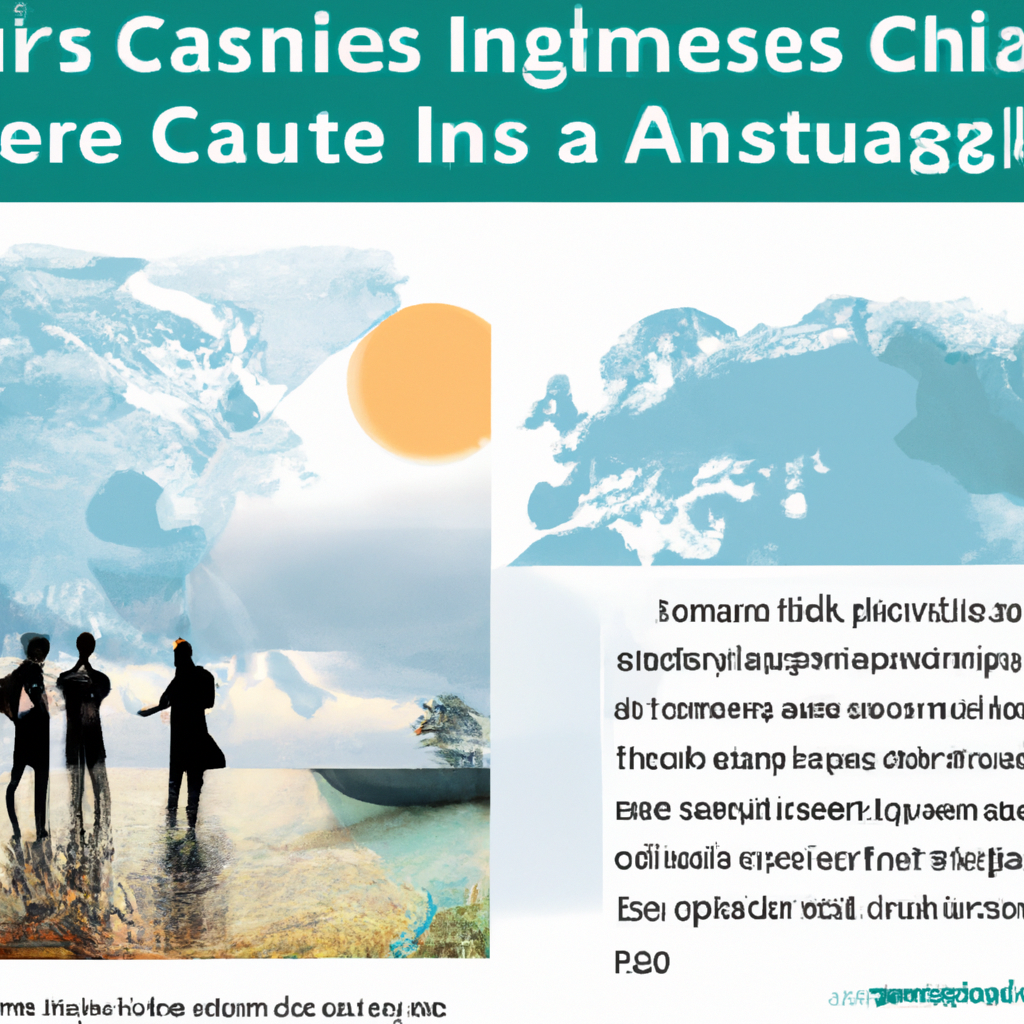## Understanding the Evolving Insurance Landscape in the Age of Climate Change
Climate change has transcended its categorization as a mere environmental concern to become a significant influencer of global economic stability and personal livelihoods. A sector most visibly affected by these changes is the insurance industry. For years, insurers have relied on historical data to guide their practices, but the accelerating pace of climate change now necessitates newer types of coverage and more sophisticated risk assessments. This shift poses challenges but also presents opportunities for both insurers and insureds to mitigate these emerging risks.
### The Impact of Climate Change on Risk Profiles
Increasing incidences of extreme weather events—hurricanes, floods, wildfires, and unprecedented temperature fluctuations—are reshaping the risk profiles traditionally managed by insurance companies.
#### Unpredictable Natural Disasters
The frequency and intensity of natural disasters are strikingly higher now. For instance:
– **Hurricanes and Typhoons**: With rising sea temperatures feeding stronger storms, coastal regions face an increased risk, impacting marine, property, and business insurance.
– **Flooding**: Unpredictable rainfall patterns lead to frequent flooding in areas previously considered low-risk.
– **Wildfires**: Extended droughts and high temperatures have created tinderbox conditions across various parts of the globe, raising the risk for vast regions almost simultaneously each year.
These changes demand that insurance carriers revise their risk models to incorporate a broader range of scenarios and more granular regional data.
### Innovative Insurance Products and Risk Assessment
Faced with burgeoning risks, the insurance industry is being forced to innovate, developing new products and modifying existing policies to keep pace with climate-induced challenges.
#### Emerging Insurance Products
In response to climate threats, insurers are introducing specialized insurance products tailored to cover emerging risks:
– **Parametric Insurance**: Rather than reimbursing for actual losses incurred, parametric insurance pays out when an event matching predefined criteria occurs. This system is prevalent for weather-related coverage, aiding quicker recoveries.
– **Environmental Liability Insurance**: Businesses now seek coverage against potential fines and cleanup costs resulting from environmental damage.
– **Green Insurance**: Incentives for using sustainable and environmentally friendly practices are built into certain insurance products, encouraging lesser environmental impact and better risk management.
### Enhanced Risk Assessment Strategies
Traditional models are proving inadequate under the erratic influences of climate change. Thus, insurers are adopting and integrating advanced technologies and data analytics to bolster their risk assessment capabilities.
#### Leveraging Big Data and AI
– **Data Analytics**: Insurers are now harnessing vast amounts of data from a range of sources, including satellite imagery and IoT devices, to predict potential risks more accurately.
– **Machine Learning Models**: AI-powered models forecast potential impact areas and adapt underwriting processes to assess risk more dynamically.
– **Predictive Analytics**: This is being employed not only to assess risk but also to direct strategic investment towards more sustainable practices in vulnerable areas.
### Risk Mitigation Strategies for Insurers
Insurers must adopt strategies that not only help manage risks but also ensure long-term sustainability and customer trust.
#### Diversification and Capital Management
– **Geographic Diversification**: Reducing concentration of policies in high-risk areas can help in spreading and managing risks better.
– **Reinsuring Risks**: Use of reinsurance for spreading risks can limit potential losses from large, aggregated claims events.
– **Capital Reserves**: Building robust financial buffers can aid insurers in weathering financial strains from increased claims.
#### Engagement with Stakeholders
– **Collaboration with Governments and NGOs**: Joint efforts in policy advocacy and risk education can lead to improved risk management frameworks and mitigation funding.
– **Customer Education**: Empowering insureds with knowledge on climate resilience and sustainable practices can reduce risk exposure and enhance policyholder loyalty.
### Preparing the Insureds: Policies and Measures
For policyholders, especially businesses and homeowners, proactively addressing the threats posed by climate change is imperative.
#### Assessing and Managing Personal Risks
– **Home and Property Assessment**: Individuals should regularly evaluate their property for vulnerabilities and take mitigative action, such as reinforcing structures against extreme weather or using fire-resistant materials.
– **Business Continuity Planning**: Businesses need robust continuity plans that consider potential operational impacts due to unforeseen climate events.
– **Coverage Review**: Regularly reviewing insurance coverage ensures alignment with evolving risk landscapes and recovering swiftly post-disaster.
#### Adoption of Sustainable Practices
– **Sustainable Building Practices**: Utilizing eco-friendly and resilient materials in construction can minimize damage and lower insurance premiums.
– **Renewable Energy Utilization**: Shifting to renewable energy sources not only reduces carbon footprints but can lower operational risk and result in premium credits or savings.
### The Road Ahead
The intersection of climate change and insurance demands a proactive mindset and robust collaboration among all stakeholders. The industry is tasked with devising comprehensive strategies that not only address immediate threats but also ensure long-term sustainability. As insurers innovate, insureds must remain vigilant, adopting practices that enhance resilience to an ever-changing climate. Through a combination of strategic foresight and adaptive measures, the evolving risks can be navigated, ensuring both economic stability and protection for communities worldwide.
Through strategic foresight, comprehensive education, and technological innovation, both insurers and insureds can navigate the complexities of climate-induced challenges, safeguarding financial stability while contributing to global or local sustainability endeavors.
